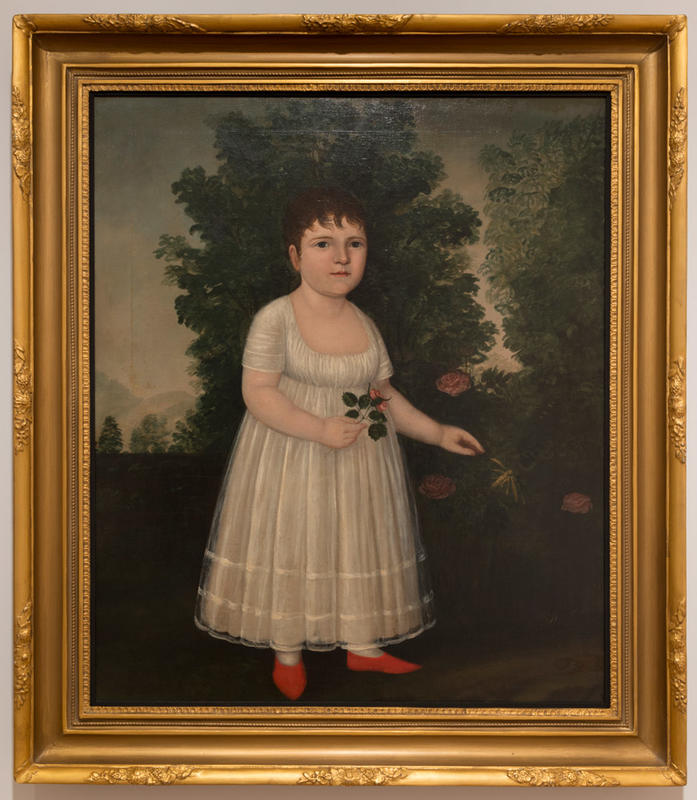More about Portrait of Sarah Maria Coward

Contributor
Despite historians' best efforts, we still don’t know much about Joshua Johnson or his work.
We don’t know when he was born. We don’t know how he became a painter. And while we’re pretty sure he’s not the same guy that hosted 1A on NPR, there’s no way to be certain. But one thing we do know is that Johnson was great at what he did.
After being born into slavery he spent several years working as a blacksmith in Baltimore, before launching a career as the first known professional African-American artist. He started his art career by taking an ad out in the local paper, calling himself a “self-taught genius, deriving from nature and industry his knowledge of the Art” despite having “experienced many insuperable obstacles in the pursuit of his studies.” All that hyperbole paid off. By 1804, when he painted this portrait of Sarah Marie Coward, Johnson was making a comfortable living for himself as an artist, with the bulk of his income likely coming from commissions from rich white families— families like Sarah’s.
Historians posit that this portrait was commissioned after Sarah Maria had passed away, likely as a way to commemorate her brief life— hence the little butterfly in the corner, which some think was intended as a nifty metaphor about death and resurrection.
If all that’s true, then it’s possible that painting Sarah brought up some emotions for Johnson, as he and his wife— coincidentally also named Sarah— had two daughters who also died quite young. The name of the portrait’s young sitter may also have stirred up some feelings for Johnson since, by the time he painted the piece, historical records show him having a new wife— Clara. The spotty historical record leaves it up to us to guess what went down in the intervening years between Sarah and Clara (Heartbreak? Divorce? Disease?) but it’s impossible to imagine that it wasn’t weighing on Johnson’s mind when he painted young Sarah’s portrait.
Sources
- Editorial, A., & Walls, J. (2020, July 16). Born into Slavery, Joshua Johnson became the first black professional artist in the United States. Artsy. https://www.artsy.net/article/artsy-editorial-born-slavery-joshua-johns….
- Johnson, S. P. (n.d.). Butterfly Lore. Lake Waco Wetlands | Baylor University. https://www.baylor.edu/lakewaco_wetlands/index.php?id=34628.
- Joshua Johnson. Artist Info. (n.d.). https://www.nga.gov/collection/artist-info.1425.html.
- Portrait of Sarah Maria Coward. The Studio Museum in Harlem. (2021, August 12). https://www.studiomuseum.org/collection-item/portrait-sarah-maria-coward.











